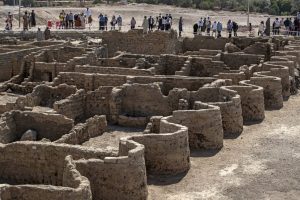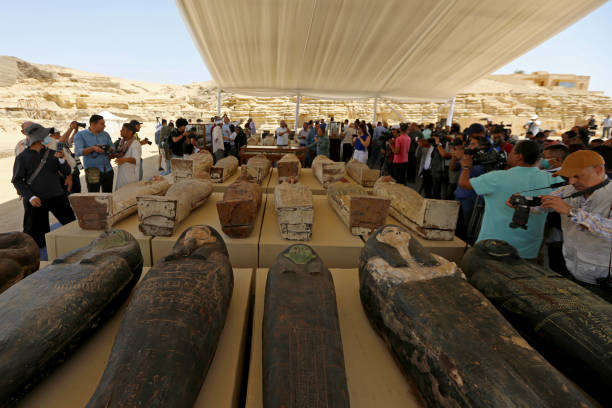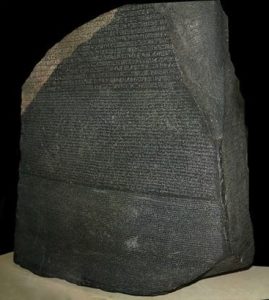Unearthing the Treasures of an Ancient Civilization
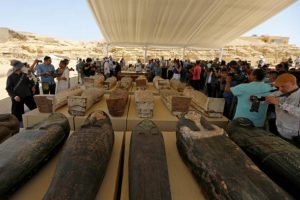
Important Archaeological Discoveries in Egypt
Ancient Egyptian civilization is one of the most important civilizations in the ancient world. To this day, archaeological discoveries continue on its land, with more than 70% of its antiquities yet to be discovered. 1.The Rosetta Stone It is the key to understanding the ancient Egyptian language. It was discovered in 1799 by a French soldier named Bouchard in the city of Rashid. In 1801, a war broke out between the French and the English, so the English seized it and sent it to London. It is now in the British Museum.
Description of the Stone:
The stone is a decree from the priests of Memphis to King Ptolemy V in 196 BC. To tank the king for his donation to the temple of the god Serapis in Memphis. The stone was written in three scripts: hieroglyphics, demotic, and Greek. In 1822, after many attempts, Champollion managed to decipher the writing because he knew Greek and with the help of Yohanna al-Shafshay, a Coptic Egyptian, who knew how to translate Demotic texts by comparing them to Coptic. Champollion then compared the names inside the cartouches (names do not change in any language) and began to decipher the ancient Egyptian language (hieroglyphics).
The texts on Rosetta Stone
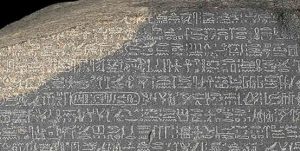
2. The Tomb of Seti I
The most beautiful and deepest of the tombs in the Valley of the Kings, reaching a depth of more than 90 meters, it was discovered by the Italian archaeologist Belzoni in 1817. The tomb bears the name “Belzoni’s Tomb” after its discoverer and is numbered KV 17 in the tombs of the Valley of the Kings in Luxor. The sarcophagus of King Seti was also found, but it was empty, and the mummy of the king was found in a cache in Deir el-Bahri. Interestingly, the mummy of a bull (Apis) was found in it, so it was also known as “The Tomb of Apis.” The decorations in the tomb are considered the most beautiful and magnificent engravings in Egyptian civilization. whether on the ceiling in the form of golden stars on a blue sky or on the walls of the tomb, such as the Book of the Dead or scenes of the king with the gods. -Scene from The Tomb of Seti I
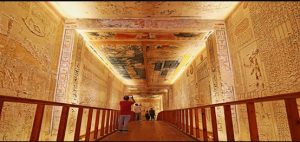
Scene from The Tomb of Seti I
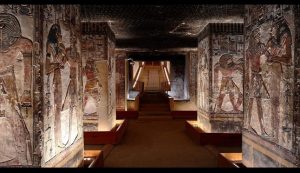
3-The Serapeum of Saqqara
Discovered by Mariette in 1851, it is an Egyptian tomb dedicated to the sacred Apis bull. The bull, which was worshiped as a god, was mummified and buried after dedicating its life to ceremonies and offerings in its temple in Memphis. It was built during the reign of King Amenhotep III and continued until the Ptolemaic era. The sarcophagi were opened using dynamite due to their hardness, which was a mistake but no other way, it is unknown how they used the huge stones and brought them into the tomb and closed it, as this is a mystery of Egyptian civilization.
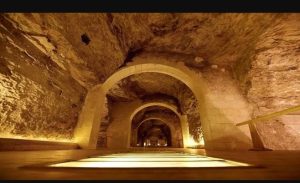
4-The Statue of King Khafre
In 1860, the Frenchman Mariette discovered the most beautiful statue in Egyptian civilization in the temple of King Khafre near the Great Sphinx. It is a statue of King Khafre made of diorite, the hardest substance after diamond. This made the statue one of the most beautiful and wonderful statues, as no one can create such a statue with the same precision and beauty. The king appears seated on a throne, and behind him appears the god Horus in the form of a falcon. There is a fusion between King Khafre and Horus, and they seem to be two sides of the same coin. Also, among the artistic wonders in the execution of the statue is that the falcon Horus is only visible from the side, while from the front of the statue, only the face of the king is seen. -statue of King Khafre made of diorite
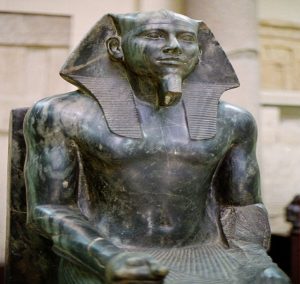
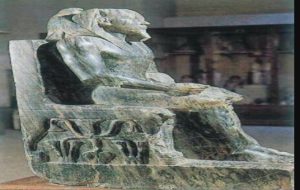
5-The Deir el-Bahri Cache
In 1871, in one of the tombs near the temple of Hatshepsut at Deir el-Bahri, based on the tomb texts of one of the Western Thebes families called Abd el-Rasul, a cache was discovered containing most of the royal mummies, including those of Ramses II and Thutmose III. The reason for the existence of this cache was that there had been thefts from the tombs at the end of the 20th Dynasty. The priests gathered the mummies and sarcophagi of the kings from the Valley of the Kings and placed them in one of the unfinished tombs deep within the mountain near the temple of Hatshepsut at Deir el-Bahri. In 1871, when thieves found the sarcophagi and mummies, they sold some of the papyri and gold artifacts found with the kings. The Egyptian government learned of this and arrested them, and then proceeded to transfer all the sarcophagi from Luxor to the museum. It is very strange that all the men and women of Western Thebes came out for a grand funeral to bid farewell to the sarcophagi of their ancestors all the way from Deir el-Bahri to the Nile River, where a cruise was found to transport them. The total number of mummies is 40, including kings, queens, and princes. They are currently on display at the Museum of Civilization. -The discovery of Deir el-Bahri Cache
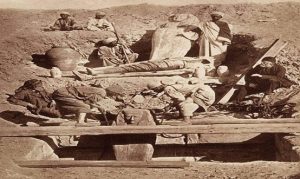
The Valley of the Kings Cache
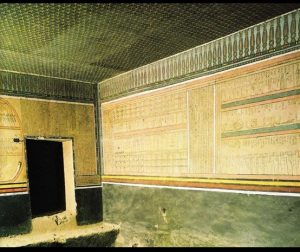
mummy procession exiting Amenhotep II’s tomb in 1898

7. The Karnak Cache
This is considered the greatest discovery in the history of Egyptian civilization. The discovery, which lasted eight years from 1903 to 1911, began when the French scholar Georges Legrain attempted to remove some of the dust from the facade of the second pylon at the Karnak Temple. He made a grave mistake by opening the floodwaters to the pylon, causing the entire facade to collapse. However, during the excavation, they found something no one expected: the Karnak cache. It contained 20,000 artifacts, including paintings, stones, gold pieces, and statues. Most of these treasures are now on display at the Egyptian Museum, with some at the Louvre Museum. The most beautiful artifact found in the cache, a statue of King Thutmose III, is now displayed at the Luxor Museum.
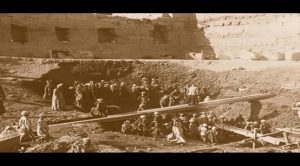
8-The Tomb of Nefertari
The great queen whose name means “the most beautiful lady” was the beloved wife of Ramses II, for whom he built the largest tomb for a queen in Egypt. The tomb is located in the Valley of the Queens and was discovered by the Italian Pirelli in 1904. Its area is about 500 square meters, filled with the most beautiful scenes and perfectly executed paintings. What is most striking is the depiction of dresses, hairstyles, earrings, and jewelry that characterized Queen Nefertari. -scene from Nefertari’s tomb
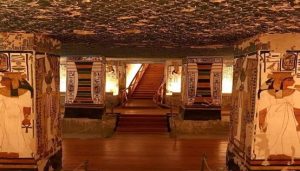
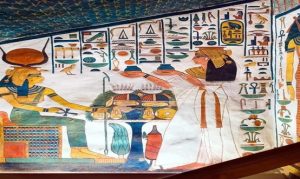
9. The Discoveryof King Tutankhamun’s Name
In 1905, the scholar Georges Legrain discovered a stela in Karnak that mentioned for the first time the title of King Tutankhamun. He also discovered a life-size seated statue. This information paved the way for Howard Carter’s discovery of Tutankhamun’s tomb.

10-The Bust of Nefertiti
The most beautiful statue in Egyptian civilization, it was discovered by Borchardt in Tell el-Amarna in 1912. It was found in the house of a sculptor named Thutmose. It is currently housed in the Berlin Museum. It was well-known in Egypt that priceless pieces were not to be taken out of the country. However, Borchardt deceived the Egyptian government by claiming that the statue was made of limestone and was a copy, when in fact it was more beautiful than the Mona Lisa. But when he looked at the face of Nefertiti, whose name means “the beautiful one has come,” he found her in an unparalleled image of beauty and elegance, from the crown of her head to her eyes, neck, and earrings. Interestingly, in the year when the first Olympic Games were held in Berlin, the Egyptian government demanded the return of the statue, and Hitler agreed. However, the museum director advised him to visit the museum to see the statue. When Hitler looked at the statue, he was amazed and said that this piece of art could not leave Berlin. And so, it has remained there until now. -The Bust of Nefertiti in Berlin
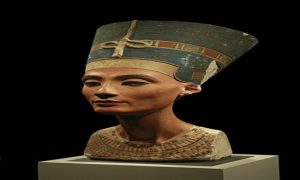
11-The Tomb of Tutankhamun
On November 4, 1922, luck played a significant role in the discovery of the most important tomb in history. In 1908, the Englishman Carter accidentally discovered the remains of the temple of Mentuhotep II at Deir el-Bahri when his horse fell into a pit. Upon excavation, they found the remains of the temple of Mentuhotep II at Deir el-Bahri. After that, Carter settled in Western Thebes for several years. On one occasion, an Egyptian peasant sold him a golden pharaonic statue for one pound. He gifted it to Lord Carnarvon to secure funding for his exploration in the Valley of the Kings. (Ironically, the statue was sold years later for $83 million.) Carter began excavating until he thought he would find nothing there. But by chance, the foot of a young boy named Hussein Abdel Rasoul stumbled upon something. When the dirt was cleared away, they found stairs leading to the tomb of Tutankhamun. After completing the excavation, Carter took a picture of the boy Hussein Abdel Rasoul wearing the Pectoralof King Tutankhamun. At the end of the excavation, they found 5,000 artifacts belonging to King Tutankhamun. These are currently on the second floor of the Egyptian Museum and are planned to be transferred to the Grand Egyptian Museum near the Giza Pyramids in 2025. The reason why the tomb was found intact is that during the 20th Dynasty, tomb robberies began, so the priests gathered the mummies and buried them in a tomb near Deir el-Bahri where the mummies of kings were found. However, the mummy of Tutankhamun was not found there. Why? During the 20th Dynasty, while excavating the tomb of Ramses VI, which is adjacent to the tomb of Tutankhamun and is 93 meters deep, the workers began to throw the debris onto the small tomb of Tutankhamun. This, fortunately, caused us to find the tomb intact and unrobbed. -A picture of the moment Carter opened the coffin of King Tutankhamun
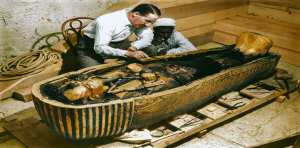
Collectibles from Tutankhamun’s tomb
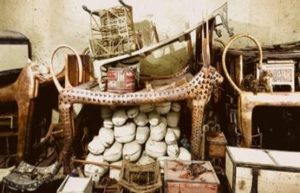
The golden mask of King Tutankhamun
Th
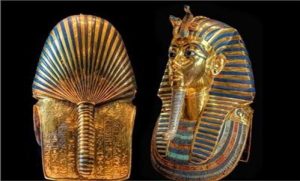
e mummy of King TutAnkhAmun
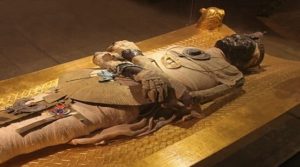
12-The Avenue of the Sphinxes
It was discovered in 1949 by the archaeologist Zakaria Ghoneim. Initially, eight statues were discovered near the Temple of Luxor. Then, between the temples of Luxor and Karnak, about 1300 statues in the form of sphinxes and lions were discovered. The Avenue of the Sphinxes is considered one of the most beautiful landmarks of the East Bank in Luxor.
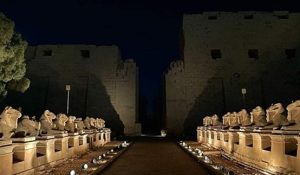
Avenue of the Sphinxes, past and present
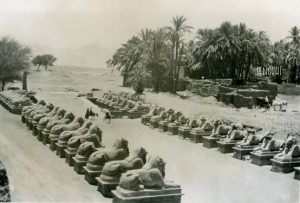
13- The Buried Pyramid
In 1952, the Egyptian archaeologist Zakaria Ghoneim discovered an incomplete pyramid in Saqqara. This pyramid belonged to King ‘Sekhem Met’ of the Third Dynasty. Although its construction was not completed, it has great archaeological value as it is the first pyramid of the Third Dynasty after the Step Pyramid of Djoser. It was called the “Buried Pyramid” because all the pyramids are found on the ground, while this one was found underground. Inside the pyramid, a tightly sealed sarcophagus was found, but it had been robbed, so the king’s mummy was not found. -The Buried Pyramid
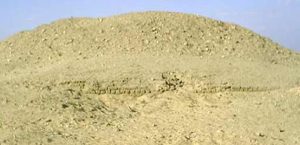

14-Khufu’s boats
In 1954, engineer Kamal el-Mallah discovered two pits for the boats of King Khufu, which were named “Solar boats,” on the southern side of the Great Pyramid. The first Khufu ship was made of cedar wood, disassembled into about 1224 pieces, and measured approximately 43 meters in length. It took about 10 years to assemble the ship, and it was displayed in a special museum dedicated to it in 1982, next to the Pyramid of Khufu. -Pictures for Khufu’s boats
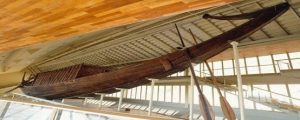
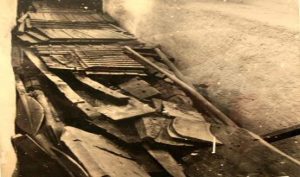
15. The Cache of the Luxor Temple
On January 22, 1989, a cache was discovered by chance at the Luxor Temple. Workers were leveling the sand and earth when the head of a pickaxe struck a stone, which turned out to be the base of a statue. The discovery was made by Dr. Mohamed el-Saghir. The cache contained a collection of the finest statues from the New Kingdom, most notably a statue of King Amenhotep III, a statue of King Horemheb, a statue of King Ramses II, and a statue of King Thutmose III. In 1991, it was transferred to the Luxor Museum and displayed in a special wing called “The Cache Hall.” It has been on display ever since. -The discovery of Cache of the Luxor Temple
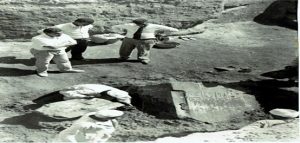
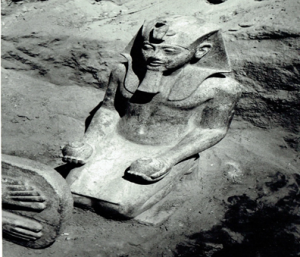
16-The Workers’ Tombs at Giza
In 1990, Dr. Zahi Hawass accidentally discovered the tombs of the workers near the Pyramid of Khufu. This discovery proved that the pyramid was built by a whole city of workers whose tombs, such as the tomb of “Abdu,” the foreman, were found. This tomb was rectangular in shape. This proves that the pyramid was not built by forced labor as some believe. Interestingly, the reason for the discovery was that a tourist fell from a horse near the pyramid and her leg hit a hole. When they dug, they found the workers’ tombs. -workers’ tombs in Giza
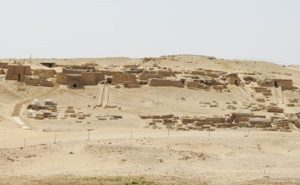
17. The Golden Mummies Valley in the Bahariya Oasis
It was discovered in 1996 by Zahi Hawass, and again, chance played a big role. A donkey belonging to the guard of the Temple of Alexander the Great in the Bahariya Oasis stumbled into a hole. When they dug, they found the Valley of the Mummies. It contains vast burial chambers with a huge number of mummies, more than 100. They were covered in golden masks, hence the name “Golden Mummies Valley.” They date back to the Greek and Roman periods. Upon discovery, their images graced the covers of the world’s most famous magazines. -The discovery of Golden Mummies Valley in the Bahariya Oasis
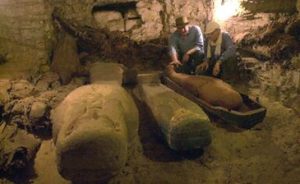
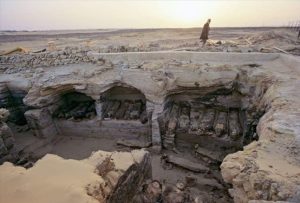
18- The Complete Mummification Workshop in Saqqara
In 2018, the Egyptian archaeologist Dr. Ramadan Hussein discovered a complete mummification workshop south of the Pyramid of King Unas in Saqqara. The workshop dates back to the 26th Dynasty, known as the Saite period. The importance of this discovery lies in the identification of many of the names of the materials used in mummification. complete mummification workshop in Saqqara -The Complete Mummification Workshop in Saqqara
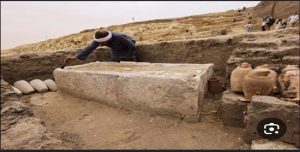
19. The Lost Golden City (Aten’s Rise)
The largest city ever discovered in Thebes was discovered in 2021 by Dr. Zahi Hawass. The city was founded during the reign of King Amenhotep III of the 18th Dynasty. The reason for calling the city “golden” is that it belongs to the golden age of the pharaohs, not because of the presence of gold in it. The discovery of the city helped in understanding the life of the ancient Egyptians, their way of life, and the shape of their houses. -The Lost Golden City (Aten’s Rise)
